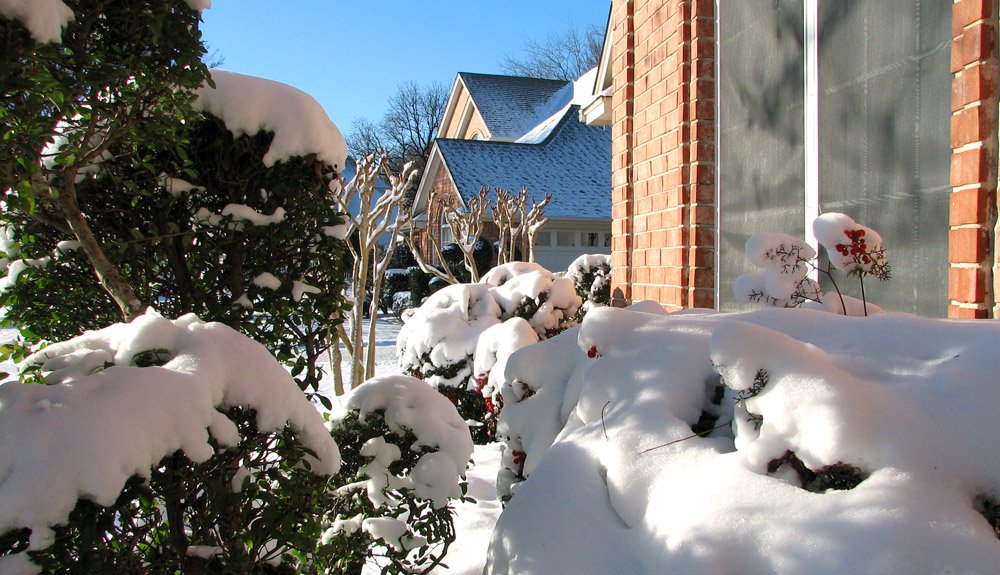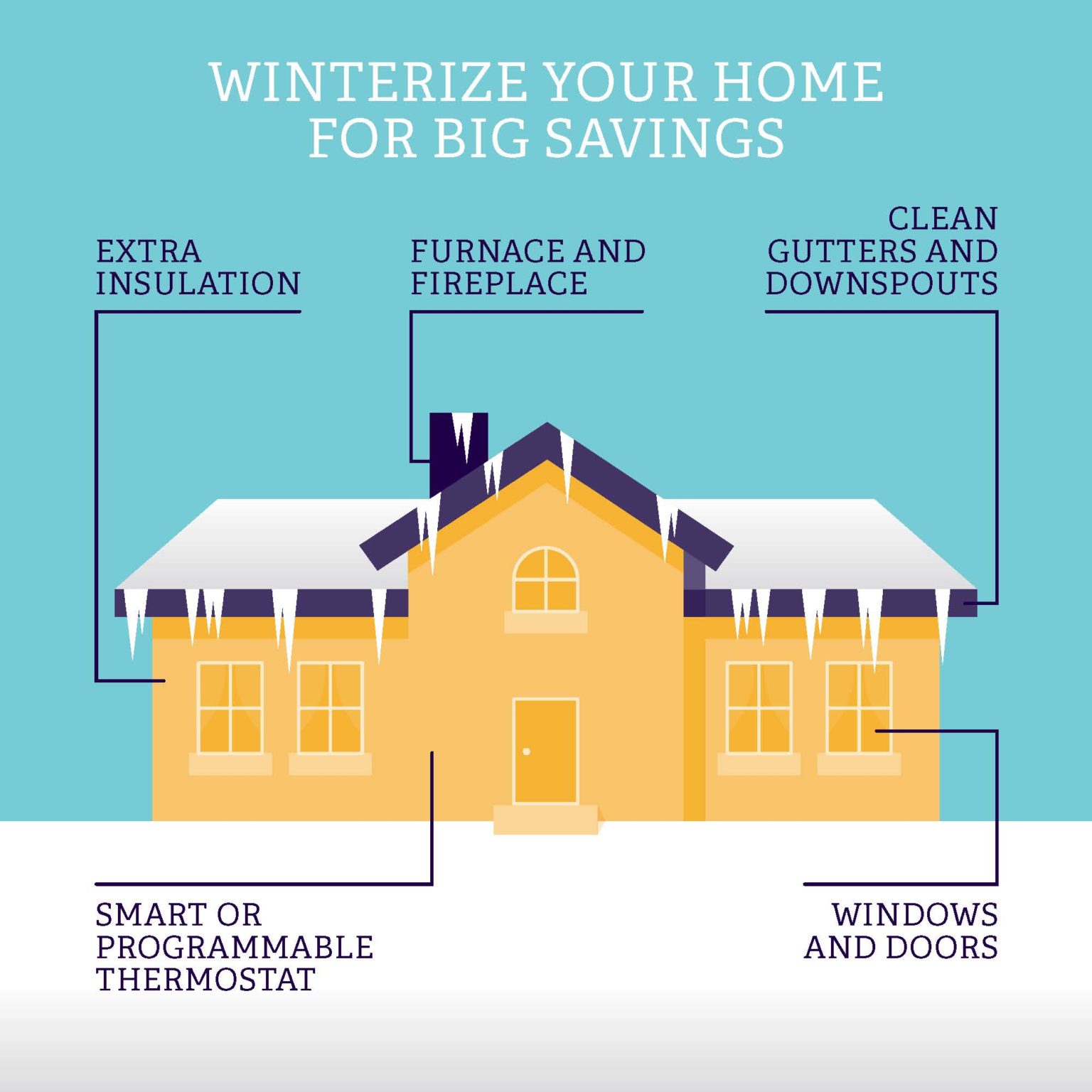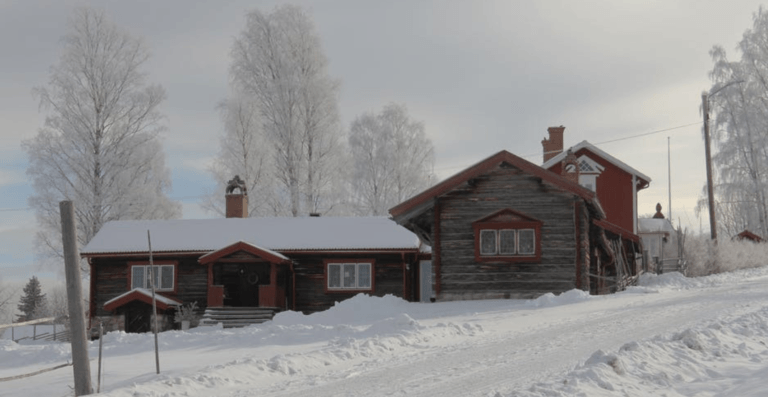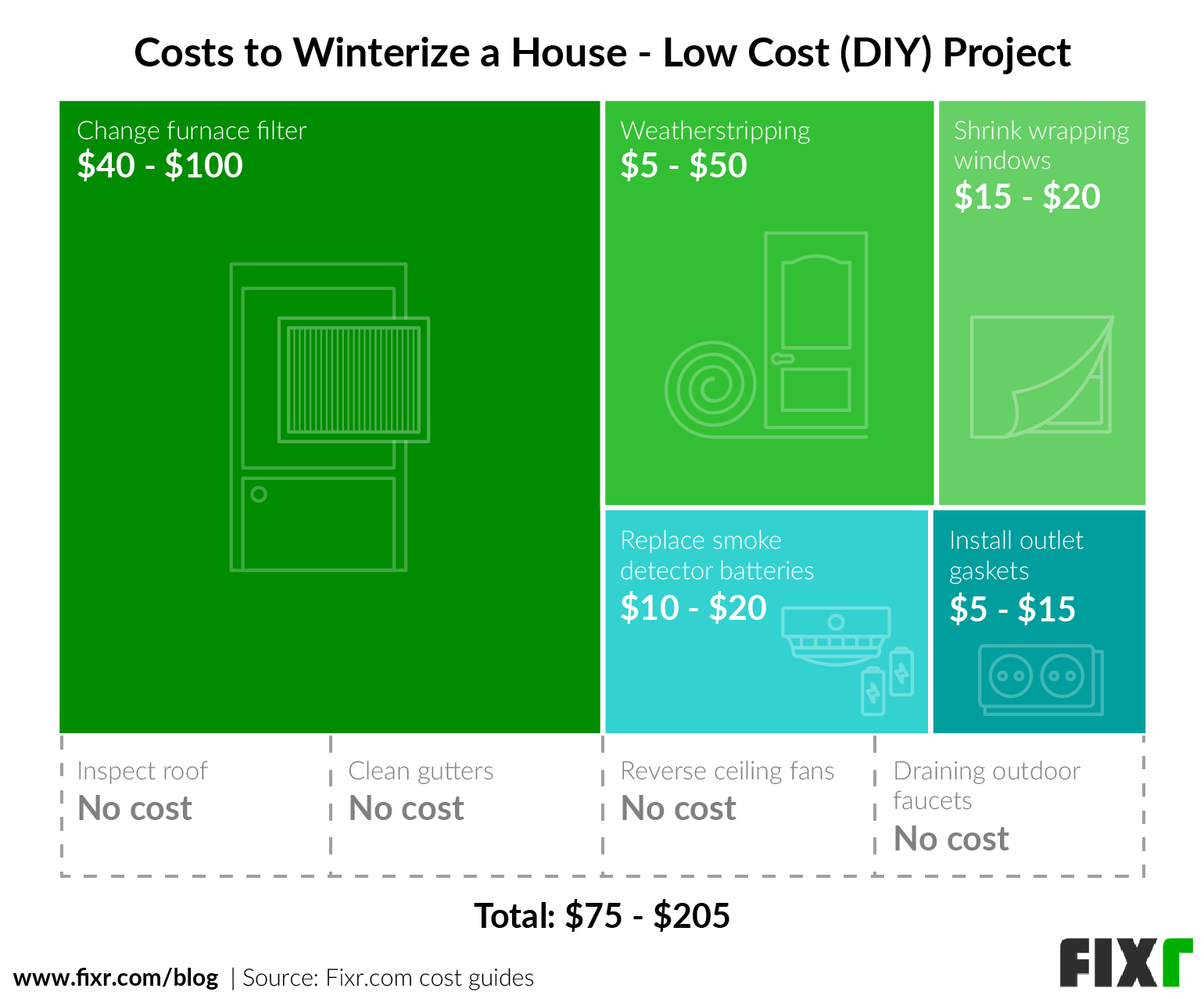Table Of Content

Attic floors also called loft floors, it itself ventilated and about 10 degrees warmer than the temperature outside. If you have any trees next to your house, check if their branches pose any threat to the roof should they fall off. Half-frozen raindrops can freeze quickly to form thick layers of ice on trees, and their weight can easily cause the branches to break off. If the tree belongs to your neighbor, you should ask them before starting to sculpt it, in order to keep the relations intact.
Inspect the Roof and Attic
You can also consider adding window insulation film if your home’s windows are single-pane or are particularly drafty. If you live in an area where winter storms are common, consider installing storm windows or a storm door to better winterize your home and make it more energy efficient. Falling leaves are a hallmark of the autumn months, but they can be trouble for a home’s gutters.
Protect yard elements
To help prevent this catastrophe from happening, complete the following steps. Once the garden beds are mulched, the last of the flowers cut, and the final mow complete, it’s time to clean and store your lawn and garden tools for the winter. If you’re up for a little climb, hoist the ladder, and let’s inspect the roof before it’s covered in snow. Having working smoke detectors in the winter is especially critical because that is when residential fires are more likely to occur. Install a carbon monoxide detector to protect you and your housemates from this toxic gas if it enters your home. “A proper roof system should include things like ice and water shields, drip edges, ridge and intake vents, and a vapor barrier that is breathable—not felt paper,” DiMartino adds.
More Prepare & Prevent

Only use calcium chloride, not rock salt, which will damage your roof, but be aware that shrubs and plants below the gutters or near downspouts could be damaged by the calcium chloride. When you’re ready to start farming, you’ll also need a farmhouse (3 timber). To avoid missing any essential steps and overspending, create a winterization plan. It is recommended to make a checklist for the tasks that you want to perform while winterizing your home. If not in active use, plug it up with a chimney balloon when winterizing your home to keep drafts out and heat in. You should winterize a house before the first frost – ideally the end of summer into the start of fall.
How To Winterize Your Hot Tub? – Forbes Home - Forbes
How To Winterize Your Hot Tub? – Forbes Home.
Posted: Mon, 18 Mar 2024 07:00:00 GMT [source]
Make sure first of all that none of your taps is dripping and that they are joined properly. In fall, it is important to take some time to check the health of your windows. Where possible, open them to check their operation, confirming that they shut flush to the frame when closed. Note any drafts; damaged or loose hinges; rotten timber; missing, loose or damaged putty; cracked or peeling paintwork and loose joints. These can all be fixed, though some, such as damaged timber, might need expert assistance. Look for signs of cracking, rot or efflorescence (a sign of damp) – immediately treat these issues with temporary measures to prevent further faults or water ingress.

While the general recommendation is to change it at least every three months, you’ll likely need to do it more often if you live up north where your furnace is running all day, every day. Also, if your home is equipped with a whole-house humidifier, now is the time to switch it on. If it’s been a few years—or if you’ve never had it done— it’s probably time for a chimney inspection and cleaning. Cracks can occur in the masonry, and birds and other animals can make nests in chimneys, causing obstructions that could allow carbon monoxide to seep back into your home.
PROTECT THE PIPES AND TAPS
A blocked or damaged chimney may heat your home unevenly and increase your utility bills. But maintaining an interior temperature of at least 55°F is crucial, especially if you don’t drain the pipes, so that plumbing in walls and floors won’t freeze. Winterizing your home means preparing it both inside and out for the cold weather. The following tasks don’t necessarily have to be completed in order, but they should all be completed by the time the cold weather arrives. If an ice dam does form, the best way to melt it is to fill a nylon stocking with calcium chloride ice melt and place it on top of the ice, says Marshall. Try to position the stocking vertically across the ice, with a bit overhanging the edge of the gutter.
Prepare your heating system
Motorcycle insurance is offered by our trusted partner, Dairyland®, through InsuraMatch, LLC, a Travelers-owned insurance agency. We have gathered a list of 10 tips that will help you to winterproof your house perfectly so you can enjoy your winter vacations peacefully. Having graduated with a first class degree in English Literature, Holly started her career as a features writer and sub-editor at Period Living magazine, Homes & Gardens' sister title.
How to winterize water pipes - video - YubaNet
How to winterize water pipes - video.
Posted: Mon, 27 Nov 2023 08:00:00 GMT [source]
After shutting off the water flow, open faucets, and flush toilets to drain the pipes. If a pipe freezes and bursts, or a sneaky leak worsens, serious water damage could occur. Turning off the water supply to the house is a smart preventive measure (though not every homeowner can do so—see below). The exterior of the house, particularly the roof, warrants a thorough checkup to ensure against structural weakness that could be exacerbated by heavy storms. Starting in the autumn, the family assigned to a farm will look for a nearby field (basically any field in the region) and start to plow it. If a field isn’t plowed and sowed by the time winter starts in December that field will be fallow for the year — you’ll also get a notification about it.
Be mindful of your safety and use wooden or plastic shovels to help shift the snow. Alternatively, duckboards or electric heating tapes can be provided to keep gutters clear of snow. Snow guards fitted near eaves reduce the risk of snow or ice breaking away and damaging glass in roofs below,’ says Douglas Kent. Identify the entry points of any cold air and then take appropriate steps to control this. Fit brush-style draft excluders to the bottom of doors or invest in a cushion sausage-style excluder to lay in front. Brush-style draft excluders can also be incorporated into letterboxes.
"Another option is to install pipe heat cables that are thermostat controlled,. Just be aware that you may have to unplug and plug in the cables at the end of this winter and beginning of the next." If you have an attic, making sure it’s properly insulated can help keep your house warm while helping to prevent ice dams. Make sure to check any attic vents for leaks and examine the insulation. You can also have a professional examine the insulation to get a better idea of the shape it’s in. It’s best to do this ahead of the first cold snap so that you have enough time to repair any potential issues. Ice dams, which occur when water builds up behind an ice blockage, can cause damage to ceilings and roofs by allowing melting snow to leak into a home.
Take steps to also familiarize yourself with how to shut off the water and where your pipes are located. It’s one thing to have a gassed-up snowblower ready and waiting in your shed. But it’s another thing when a snowstorm dumps a foot of snow and you can’t get to it. This might be a small task on your winterizing list, but it’s an important one. If you have a fireplace, you’ll want to make sure the chimney is clear of any buildup. A dirty chimney can be a fire hazard, so hire a chimney sweep to ensure it’s clear and you can build fires safely all season.
Replace your furnace filter and schedule a service appointment so that your heating system is ready to go before you need it. This might mean scheduling a service call when you’ve got your AC pumping during the summer because service appointments can be hard to get during the height of the season. Want an outdoor space to entertain friends and family when the nicer weather comes? Before starting construction, you may want to consider whether a deck or patio is best for... As you level up your town, you’ll earn development points that unlock new technologies for your town to use.
To try and ensure you’re correctly doing all of this, you can also contact a local lawn care professional to take care of the work for you. If you have window AC units, remove and store them in a dry location. “The main reason to remove window units is that they will create drafts. Depending on the region, he recommends removing window units around mid to late September. This is something homeowners should be able to do themselves—although it may require two sets of hands.
Contact your local independent agent or Travelers representative to make sure your homeowners coverage is up to date and premiums are paid up so you’ll be covered in case anything happens while you’re away. If you’re not sure where it is or how to shut off the water, you should call a professional for help. Usually, there is a single “handle” that you turn to shut off the main. However, as noted, it’s best to call in a professional if you are unsure. Making and checking your plumbing systems all-around your house is a good idea for winterizing your house and for that you may need a professional plumber’s help. Winter cold causes a very serious amount of damage to many homes every year, and while people usually consider these damages unavoidable, there are plenty of ways to prevent them.
Outside of cutting down on the winterizing expenses, there are other ways you can keep your bills low in the winter. One obvious one is keeping your thermostat at about 68 degrees, though keeping warm air from escaping through holes and open windows and doors is key, too. If you like bare windows, you might want to reconsider your choices as we head into winter. “When new windows aren’t an option, adding curtains or drapes will help to preserve heat,” DiMartino says. You’ll want to keep them open during the day to allow sunlight to heat your rooms. Another option is to schedule a building pressurization test to be completed by a professional.













